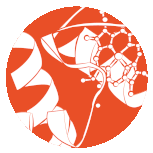
Okay, Ada—what next? (2015 edition)
 Ada Lovelace Day has been and gone for another year, and all over the globe people marked the occasion with events focusing on women in STEM.
Ada Lovelace Day has been and gone for another year, and all over the globe people marked the occasion with events focusing on women in STEM.
As with last year, my hometown of Vancouver was no different, with Telus World of Science presenting a celebration of women in STEM. As part of the Innovators Speakers Series in conjunction with Microsoft Canada, a sizable audience was treated to words of wisdom from five notable women working in STEM.
Although each of the five works in a different area of STEM, ranging from communications and computing industries to full-on academia, all acknowledged that something must be done to motivate women into STEM careers.
- Janet Kennedy, president of Microsoft Canada, with 30 years’ experience in tech, encouraged us to embrace coding and take advantage of the rising employment trends in the industry. As well as answering future Canadian workforce needs, increasing the number of women in STEM careers improves diversity and has a knock-on effect in terms of better and more varied product ideas that meet the needs of the whole community.
- Amiee Chan, president and CEO of Norsat International Inc., shared three observations that she found helpful when working her way to the top: “dare to be different,” “put your passion first and foremost” and “seize the day.” In recounting her early days as CEO, when overseas visits with a male colleague invariably led to confusion about whether she was his assistant or not, Chan recognized that although opposition may not always be obvious, we still need to eliminate the biases that hold women back and to balance the opportunities available to them.
- Jennifer Gardy, a senior scientist with the BC Centre for Disease Control, delivered a manifesto for combating the under-representation of women in STEM. She suggested brushing up on personal knowledge of biases like gender stereotyping that depicts engineers and scientists as men in white coats (also mentioned by earlier speakers), speaking out (bias interruption) and staying optimistic by spreading good news.
- Continuing the optimism theme, Elizabeth Croft, professor of mechanical engineering at UBC, reminded us that only 86 years ago, women were not even considered persons in Canada. In the decades since emancipation, women have certainly come a long way, but there is still a real need to increase diversity in STEM and take full advantage of what women can offer to society here.
- Finally, Genevieve L’Esperance, a recent graduate of computer science and biology, who is already involved in mentoring women in STEM, described what keeps her entranced by computer science. Describing herself as a “goal digger,” Genevieve relies on her competitiveness, curiosity and imagination to keep her on track with creating and achieving her goals.
 Although L’Esperance is older than the target audience for encouragement into STEM careers (most of the speakers seemed to target girls in secondary education or below as most in need of representative role models and media images), she finished off the seminar on a high note, presenting a refreshing view on how younger women are indeed following their passions in what used to be a non-traditional field. Admitting to those “typical” female traits of self-doubt and a potential disheartening inner monologue, she presented concrete strategies for “fading out the insecurities.” Her current career trajectory is living proof that she is succeeding, and she is indeed a bright and shining role model for younger women and girls contemplating a launch into STEM.
Although L’Esperance is older than the target audience for encouragement into STEM careers (most of the speakers seemed to target girls in secondary education or below as most in need of representative role models and media images), she finished off the seminar on a high note, presenting a refreshing view on how younger women are indeed following their passions in what used to be a non-traditional field. Admitting to those “typical” female traits of self-doubt and a potential disheartening inner monologue, she presented concrete strategies for “fading out the insecurities.” Her current career trajectory is living proof that she is succeeding, and she is indeed a bright and shining role model for younger women and girls contemplating a launch into STEM.
Google searches for women in STEM still turn up a high proportion of gloom, but the speakers above all maintained an optimistic outlook, recognizing recent triumphs and advances. Each year, Ada Lovelace Day signals a little more progress that comes with the awareness spread by this global celebration of women’s achievements in science, technology, engineering and mathematics.
Did you know? Computer programming was originally women’s work: the earliest programmers were women. They wrote the code, while men did the assembly stuff.

No Comments